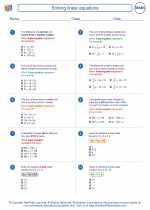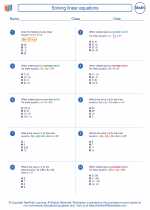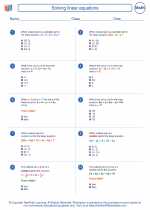Solving linear equations -> scatter plot
Scatter Plot
A scatter plot is a type of mathematical diagram using Cartesian coordinates to display values for two variables for a set of data. The data is displayed as a collection of points, each having the value of one variable determining the position on the horizontal axis and the value of the other variable determining the position on the vertical axis.
Key Concepts
- Variables: In a scatter plot, we have two variables - one represented on the horizontal axis (x-axis) and the other on the vertical axis (y-axis).
- Data Points: Each data point on the scatter plot represents the values of the two variables for a particular observation or data entry.
- Trend: The pattern or trend in the data can be observed by examining the overall distribution of the points on the scatter plot.
- Correlation: The scatter plot can show the relationship between the two variables, indicating whether they are positively correlated, negatively correlated, or not correlated at all.
How to Create a Scatter Plot
To create a scatter plot, follow these steps:
- Collect data for the two variables of interest.
- Choose which variable will be represented on the x-axis and which on the y-axis.
- Plot each data point on the graph, using the value of one variable as the x-coordinate and the value of the other variable as the y-coordinate.
- Look for patterns and trends in the distribution of the data points.
Uses of Scatter Plots
Scatter plots are commonly used to:
- Identify relationships between variables.
- Identify outliers in the data.
- Assess the strength and direction of the correlation between variables.
Example
For example, let's say we want to analyze the relationship between the number of hours students spend studying and their test scores. We can create a scatter plot with the number of study hours on the x-axis and the test scores on the y-axis. Each data point will represent a student's study hours and test score, allowing us to see if there is any correlation between the two variables.
Conclusion
Scatter plots are a valuable tool for visually displaying and analyzing the relationship between two variables. By understanding how to create and interpret scatter plots, we can gain insights into the patterns and trends within our data.
[Scatter Plot] Related Worksheets and Study Guides:
.◂Math Worksheets and Study Guides Eighth Grade. Solving linear equations

 Worksheet/Answer key
Worksheet/Answer key
 Worksheet/Answer key
Worksheet/Answer key
 Worksheet/Answer key
Worksheet/Answer key
 Worksheet/Answer key
Worksheet/Answer key
 Worksheet/Answer key
Worksheet/Answer key
